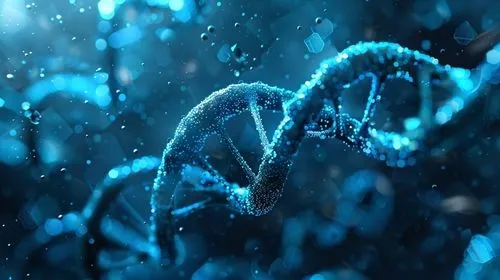Clues in the Bone Marrow Lead to New Multiple Myeloma Research

BY ERIC HANSEN
Targeting the bone marrow environment in multiple myeloma may be just as important as targeting the myeloma cells themselves.
At last year’s ASH conference there was a “new kid on the block” that appeared in poster presentations. A bone-building gene called RUNx is part of our bone marrow's micro-environment and it regulates cells for bone growth and repair (osteoblasts). It turns out however, that multiple myeloma cells also have RUNx2 genes, and like wolves in sheep’s clothing produce bone cell features on their surface, making them appear like the very cells that help our bones. This leaves them free to attack and proliferate, causing lesions, holes and bone breaks. The immune cells in bone marrow cells can’t recognize them as “alien” and therefore don’t respond to destroy them because they look like normal neighbors. As we know, myeloma’s first job is to suppress and evade our immune system so it can thrive.
There are variations (transcription factors) named RUNx1, RUNx2 and others. It’s the RUNx2 version that is getting laser focus now at the University of Alabama in Birmingham by a team headed by Dr. Yang Yang with a grant from the International Myeloma Foundation.
Research published last June showed that myeloma patients had much greater expression of RUNx2 in their myeloma cells, and the more this occurred, the higher their risk profile; which makes overexpression of RUNx2 a prognostic factor.
 If researchers can interrupt the activation of RUNx2 in myeloma cells, it will render them vulnerable to our immune systems.
This is particularly crucial, because this process of neutralizing RUNx genes begins in the micro-environment of our bone marrow. If researchers can develop a drug that prevents RUNx2 from becoming active in myeloma cells but not in normal cells, they can give us an immune response against the myeloma at its source, and our own bodies can then go about the process of repairing the lesions and holes caused by myeloma as well as root out the myeloma cells that still lurk in lesions and tumors.
Building on their research last year, Dr. Yang and her team have embarked on a second year of research into ways to kill myeloma cells using a compound against RUNx2. The special compound is delivered by binding to a protein called CD-138 on the surface of myeloma cells. In a recent interview, Dr. Yang said this protein marker is expressed on all myeloma cells, but those cells that have the heaviest expression of this marker, and cause the most damage, makes them the most vulnerable to attack. Our bone-building cells do not express this protein, she added, so the antibody treatment they are now testing in mice is selective for myeloma. Their experiments to date show that it is effective. Dr. Yang feels they may be only one or two years away from requesting FDA approval to conduct clinical trials. We look forward to seeing much more about this in the coming year. Stay tuned!
If researchers can interrupt the activation of RUNx2 in myeloma cells, it will render them vulnerable to our immune systems.
This is particularly crucial, because this process of neutralizing RUNx genes begins in the micro-environment of our bone marrow. If researchers can develop a drug that prevents RUNx2 from becoming active in myeloma cells but not in normal cells, they can give us an immune response against the myeloma at its source, and our own bodies can then go about the process of repairing the lesions and holes caused by myeloma as well as root out the myeloma cells that still lurk in lesions and tumors.
Building on their research last year, Dr. Yang and her team have embarked on a second year of research into ways to kill myeloma cells using a compound against RUNx2. The special compound is delivered by binding to a protein called CD-138 on the surface of myeloma cells. In a recent interview, Dr. Yang said this protein marker is expressed on all myeloma cells, but those cells that have the heaviest expression of this marker, and cause the most damage, makes them the most vulnerable to attack. Our bone-building cells do not express this protein, she added, so the antibody treatment they are now testing in mice is selective for myeloma. Their experiments to date show that it is effective. Dr. Yang feels they may be only one or two years away from requesting FDA approval to conduct clinical trials. We look forward to seeing much more about this in the coming year. Stay tuned!
BY ERIC HANSEN
Targeting the bone marrow environment in multiple myeloma may be just as important as targeting the myeloma cells themselves.
At last year’s ASH conference there was a “new kid on the block” that appeared in poster presentations. A bone-building gene called RUNx is part of our bone marrow's micro-environment and it regulates cells for bone growth and repair (osteoblasts). It turns out however, that multiple myeloma cells also have RUNx2 genes, and like wolves in sheep’s clothing produce bone cell features on their surface, making them appear like the very cells that help our bones. This leaves them free to attack and proliferate, causing lesions, holes and bone breaks. The immune cells in bone marrow cells can’t recognize them as “alien” and therefore don’t respond to destroy them because they look like normal neighbors. As we know, myeloma’s first job is to suppress and evade our immune system so it can thrive.
There are variations (transcription factors) named RUNx1, RUNx2 and others. It’s the RUNx2 version that is getting laser focus now at the University of Alabama in Birmingham by a team headed by Dr. Yang Yang with a grant from the International Myeloma Foundation.
Research published last June showed that myeloma patients had much greater expression of RUNx2 in their myeloma cells, and the more this occurred, the higher their risk profile; which makes overexpression of RUNx2 a prognostic factor.
 If researchers can interrupt the activation of RUNx2 in myeloma cells, it will render them vulnerable to our immune systems.
This is particularly crucial, because this process of neutralizing RUNx genes begins in the micro-environment of our bone marrow. If researchers can develop a drug that prevents RUNx2 from becoming active in myeloma cells but not in normal cells, they can give us an immune response against the myeloma at its source, and our own bodies can then go about the process of repairing the lesions and holes caused by myeloma as well as root out the myeloma cells that still lurk in lesions and tumors.
Building on their research last year, Dr. Yang and her team have embarked on a second year of research into ways to kill myeloma cells using a compound against RUNx2. The special compound is delivered by binding to a protein called CD-138 on the surface of myeloma cells. In a recent interview, Dr. Yang said this protein marker is expressed on all myeloma cells, but those cells that have the heaviest expression of this marker, and cause the most damage, makes them the most vulnerable to attack. Our bone-building cells do not express this protein, she added, so the antibody treatment they are now testing in mice is selective for myeloma. Their experiments to date show that it is effective. Dr. Yang feels they may be only one or two years away from requesting FDA approval to conduct clinical trials. We look forward to seeing much more about this in the coming year. Stay tuned!
If researchers can interrupt the activation of RUNx2 in myeloma cells, it will render them vulnerable to our immune systems.
This is particularly crucial, because this process of neutralizing RUNx genes begins in the micro-environment of our bone marrow. If researchers can develop a drug that prevents RUNx2 from becoming active in myeloma cells but not in normal cells, they can give us an immune response against the myeloma at its source, and our own bodies can then go about the process of repairing the lesions and holes caused by myeloma as well as root out the myeloma cells that still lurk in lesions and tumors.
Building on their research last year, Dr. Yang and her team have embarked on a second year of research into ways to kill myeloma cells using a compound against RUNx2. The special compound is delivered by binding to a protein called CD-138 on the surface of myeloma cells. In a recent interview, Dr. Yang said this protein marker is expressed on all myeloma cells, but those cells that have the heaviest expression of this marker, and cause the most damage, makes them the most vulnerable to attack. Our bone-building cells do not express this protein, she added, so the antibody treatment they are now testing in mice is selective for myeloma. Their experiments to date show that it is effective. Dr. Yang feels they may be only one or two years away from requesting FDA approval to conduct clinical trials. We look forward to seeing much more about this in the coming year. Stay tuned!
about the author
Jennifer Ahlstrom
Myeloma survivor, patient advocate, wife, mom of 6. Believer that patients can contribute to cures by joining HealthTree Cure Hub and joining clinical research. Founder and CEO of HealthTree Foundation.
More on Treatment Advances
Trending Articles




Get the Latest Multiple Myeloma Updates, Delivered to You.
By subscribing to the HealthTree newsletter, you'll receive the latest research, treatment updates, and expert insights to help you navigate your health.















